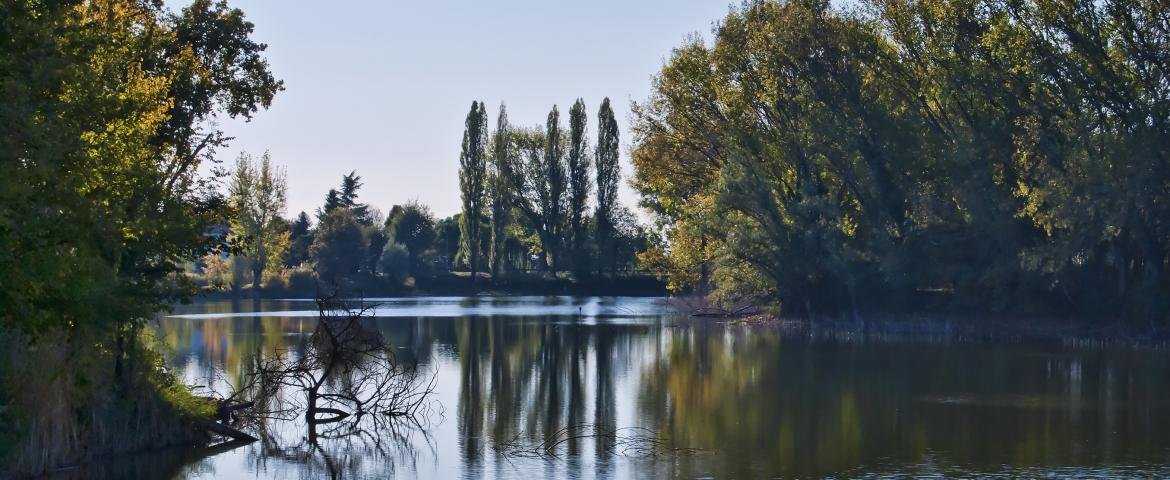
Legends inspired by the springs fed by an ancient branch of the Po river
❝The Gorghi di Trecenta, located near the Etruscan-era village of the same name, is the site of a spring-fed watery environment. These natural springs, whose waters are still continuously pushed above ground by a former branch of the Po, have inspired the popular imagination over the centuries with curious legends; today they offer shelter to diverse aquatic fauna and a rich biodiversity of vegetation.❞
The area of the Gorghi di Trecenta, now a SIC area (Site of Community Interest), includes a series of wetlands, located in natural depressions of the land and are still today fed by the springs of a Po riverbed. These cavities were formed along the the so-called "Argine della Sposa" (bank of the bride) following the overflowing of the Tartaro river, giving life to a naturalistic area of about 19 hectares that is particularly rich in vegetation and lake fauna. They are therefore the remnants of ancient and devastating floods.
The Gorghi, which were included in the Napoleonic land register of 1808, include 8 ponds with variable depths ranging from 3 to 15 metres. One of the most interesting springs is the Gorgo Gàspera, surrounded by trees and used for fish farming, it has an old eighteenth century manor on its nothern shore. The rural building includes a four-storey tower, the remains of an ancient barn with five round arches interspersed with slender pilasters, as well as a stable.
However, the most famous site is the Gorgo della Sposa, documented as far back as 1269 in a granting act: due to its size, it constituted the natural boundary between the enclosed area of Trecenta and the enclosed area of Sariano, both communities included in the duchy of Ferrara. Its name derives from a local legend of the tragic story of a young girl who, in love with a poor boy, preferred to die in the waters of the natural spring pool rather than marry a rich gentleman to whom she had been promised by her family. Even today, according to legend, the moans of the girl's ghost can be heard during moonless nights. According to other local traditions, the pools are actually the fruit of divine retribution meant to punish the evil inhabitants of the ancient cities submerged by floods: apparently you can still hear the moans at night accompanied by the mournful sound of the submerged bells. These legends always have tragic undercurrents and fully express the sentiment of the dramatic memory of floods that caused the drowning of thousands of people and the destruction of entire villages.
However, some human settlements also seem to have developed near the pools. In 2000, during archaeological excavations, the remains of two rustic villas and other settlements dating back to the Roman age were found near the whirlpools, probably positioned on the high side of the palaeochannel of the Filistina (also called the Po di Adria). The so-called Argine della Sposa was built on this same palaeochannel in medieval times.
By train: Trecenta is situated about 9 km from Badia Polesine station (railway line Verona-Rovigo), with good cycle-rail interchange facilities.
Where to eat:
we suggest Ristorante Pizzeria Tigelleria Bella Zia da Marco (Via Stradone Runzi 1805, Runzi di Bagnolo di Po; tel. 0425 714812) and Azienda Agristuristica Valgrande.
Where to stay:
we recommend Albergo Ristorante Corte dei Gorghi (Via Argine Circondario 255, Trecenta; tel. 347 7223310) and Agriturismo La Bisa.
Tours and bike & boat rental:
for bike and horse trips and boat tours please refer to the website of Parco Delta del Po.
An old country villa of the Venetian patricians immortalized by the verses of Lord Byron
The historical floating artefacts that connect communities across the river
The lagoon landscape of the Delta with its millenia-old tradition of aquaculture
An ancient navigation basin that has been transformed into a beautiful marshland of incredible biodiversity